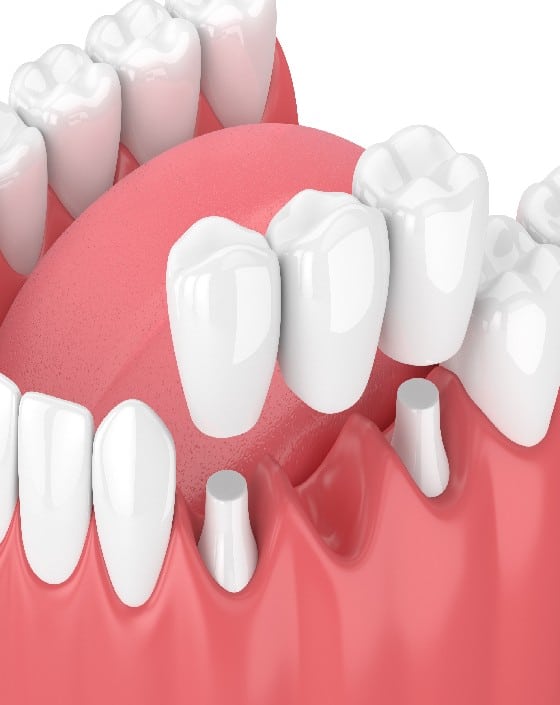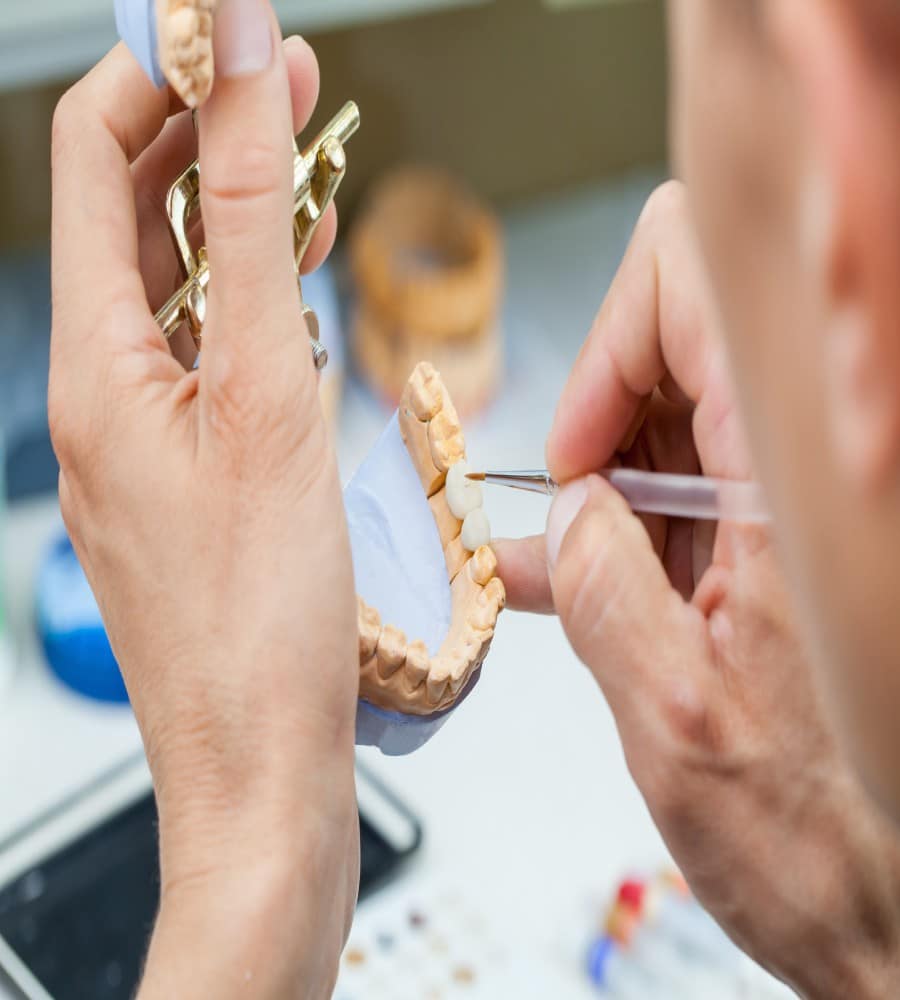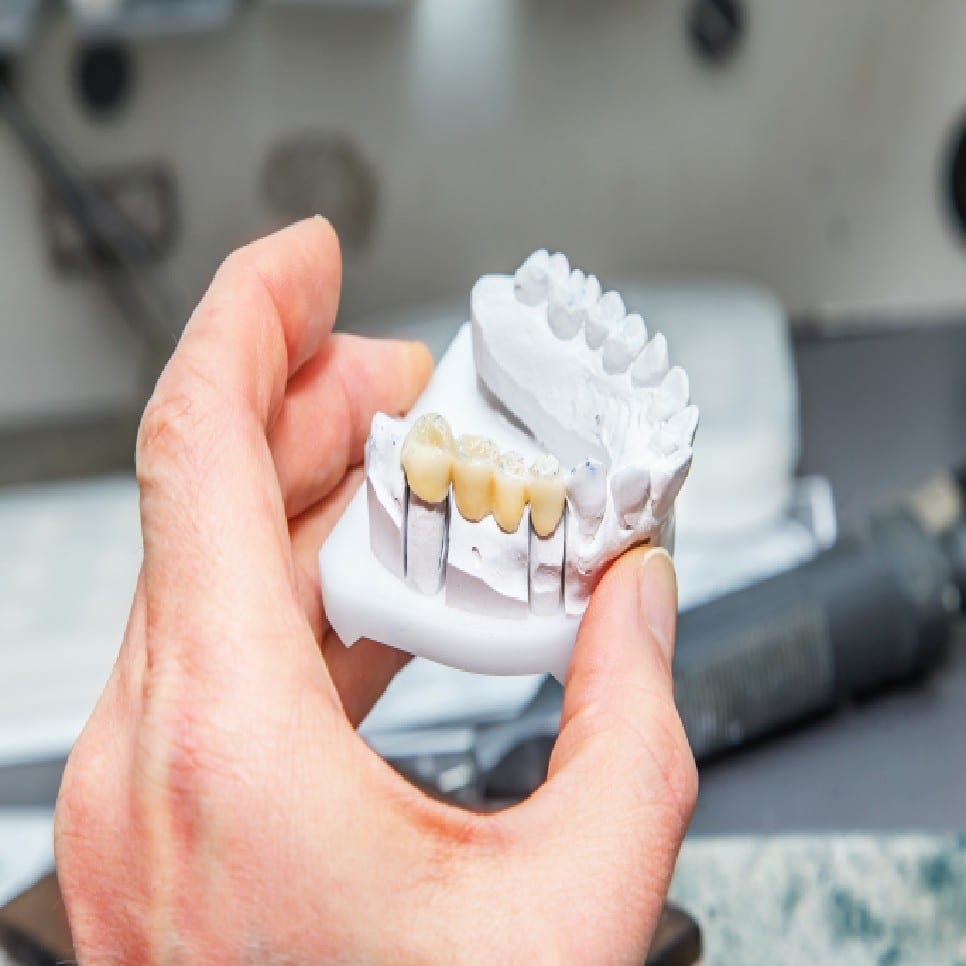
What Is A Dental Bridge?
Basically, a dental bridge is a crown secured on either side by two crowns placed on adjacent, filed down teeth. Dental bridges consist of two main parts: anchor crowns and pontics (artificial teeth). The anchor crowns affix to abutment teeth (existing adjacent teeth or bridge-supporting implants) which are bound to the pontic or pontics between them.
A dental bridge can have up to two pontics, depending on the space of the gap — or number of missing teeth — between your existing teeth. These pontics can be made of a variety of materials including gold, alloys, porcelain, or a combination of the three. The abutment teeth can also be replaced, if they are too deteriorated to support the bridge, with dental implants.
Advantages Of A Dental Bridge?
There are two main benefits to utilizing a dental bridge treatment:
1. Restore missing teeth
2. Prevent complications missing teeth cause.
If you have suffered the loss of a tooth, it is imperative that you seek professional help to prevent further oral health deterioration. Missing teeth can cause a variety of complications, most notably tooth migration.
Because of an absence of counter-pressure while chewing, the tooth or teeth above your missing tooth will eventually begin moving down or upward to fill the gap. These displaced teeth have a tendency to develop periodontal (gum) disease around their exposed roots causing acute pain while eating, talking, or chewing. Alternatively, teeth on either side of the gap left behind by the missing tooth (called the edentulous space) will slant inward toward it to fill the gap. In either of these situations, designing and implanting a replacement tooth becomes incredibly difficult, painful, and time-consuming.
Furthermore, missing teeth eventually cause bones to deteriorate, causing your facial features to sag and droop. Replacing the missing tooth will help ensure bone strength and keep the shape of not only your beautiful smile, but your face as well.

What Does A Dental Bridge Treatment Involve?
Dental bridge design involves several integrated steps to put your smile back together.
At your first appointment, your dentist precisely reshapes the neighboring teeth to hold a bridge. Your cosmetic dentist makes a model of your teeth to send to our specialty lab for the custom construction of your bridge. You’ll wear a temporary bridge to protect the exposed abutments and gums during the creation phase of your permanent bridge.
After about two weeks, you return to our office to receive your new bridge. Your dentist removes the temporary bridge and checks your new bridge for a perfect fit. Once you and your dentist are satisfied with the final product, we permanently cement the porcelain or metal bridge.



